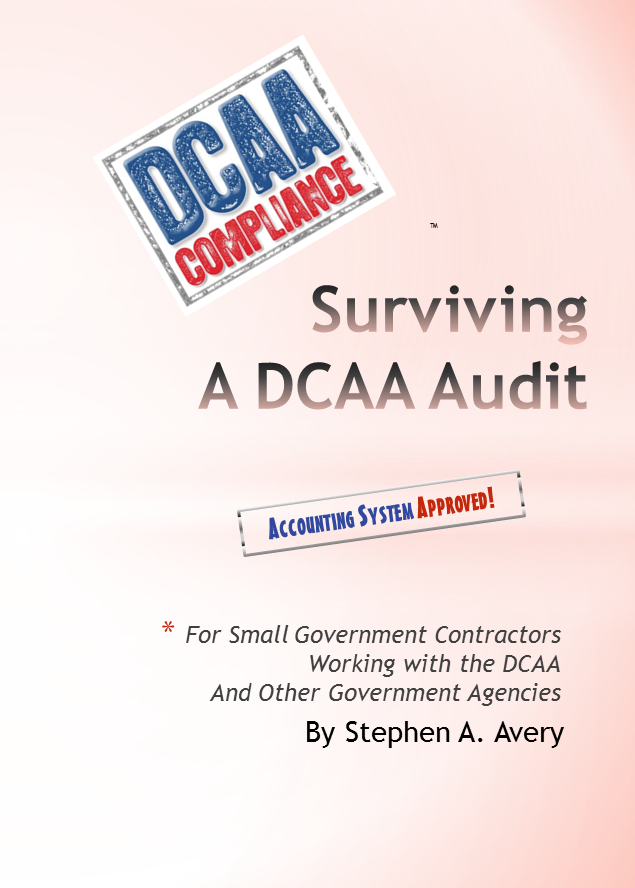I remember enduring a room inspection as an enlisted man in the 82nd Airborne with a new company commander. The 1st Sergeant usually tried to make my room the first for inspection, trusting me to delay the CO long enough to prepare the other rooms for any of his individual idiosyncrasies. This particular company commander, who ended up as the best of the four or five I served under, was chewing me out for laying out my inspection items in a manner required by his predecessor. Finally, I turned to him and said:
“With all respect, Sir, I can only follow your orders, not read your mind”.
He laughed, agreed, and moved on. Of course the 1st Sergeant had time to warn the rest of the barracks and make the necessary adjustments. Once again, “Ave” (one of my many nicknames in service) took a bullet for the team.
I am reminded of this story almost every time I open an email from a DCAA auditor; although I can count on one hand the number of DCAA auditors who saw the other side of the issue.
The Model Schedule I is an excellent example of where contractors are often forced to read individual DCAA auditor’s minds and deal with their idiosyncrasies. The problem with the model exists primarily on two levels: design and implementation.
Design
In the attempt to read the DCAA’s collective mind, the primary design of the Model I, as stated by the regulation, is a reconciliation of claimed and billed costs by contract.
DCAA appears to limit this universe of contracts and subcontracts to those contracts that include government participation. A simple definition of government participation are those contracts or subcontracts with variable indirect rates (adjustable indirect rates subject finalization and thus “government participation”).
Cost type contracts are the primary member of this universe and Time and Material (T&M) contracts where there is a variable rate (provisional G&A rate for example). For reasons poorly defined, the majority of DCAA auditors will expect all T&M contracts to be reported on the Schedule I regardless of government participation.
Let’s go ahead and focus on the cost type contracts for the moment to address the fundamental design flaw in the Model Schedule I
COSTS
We agree that the Schedule I is intended to capture and reconcile COSTS, but whose costs: the government’s or the contractors? The difference is something we accountants refer to as the “Entity Concept”. The government’s costs (entity “government”) and the contractor’s costs (entity “contractor”) are not necessarily the same. DCAA’s failure to understand this primary accounting principle leads to problem after problem when working with their Model Schedule I.
First Example—Fee. Fee is a cost to the government but not a cost to the contractor. Where does fee go on the Model Schedule I? Obviously it is included with the contractor’s billed amount but then this makes reconciliation to the Schedule H (contractor’s costs) problematic. Some DCAA auditors address this by asking the contractor to add a column to the billed section for fee. Some demand the contractor remove the fee from the billed amount. Most ignore it.
Second Example – Sales Tax. A couple of states, Hawaii and New Mexico for example, tax many government contracts under sales tax or gross revenue tax. Contractors are allowed to bill these amounts on cost type contracts. GAAP does not allow these payments to be treated as a contractor expense. The amount billed to the government goes to a liability account and is relieved when paid. According to GAAP, and we all know contractors are required to follow GAAP, the sales tax never hits the contractor’s income statement as an expense or revenue.
Thus, sales tax is an expense to the government entity but not the contractor entity. Some auditors take the same path as on fee and add a column to the Model Schedule I’s billing section for the tax amounts. Others go further and demand the contractor add a column to the Schedule H.
TIMING
The other fundamental flaw in the basic design principle of the Model Schedule I is timing. In all the innocence that can only be found with inexperience, when DCAA created the Model Schedule I assuming that billing would match costs in any particular year. This is an especially interesting assumption given that many contractors are allowed to bill as often as every eight days. In reality, the amount billed for the year rarely matches the costs for the year (fee and sales tax aside).
Given these significant design issues, it will not surprise anyone that the implementation created new issues. I will hit this on the next post.

